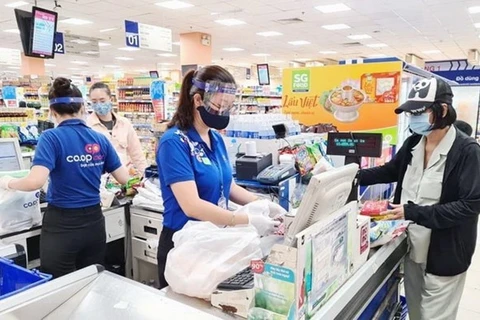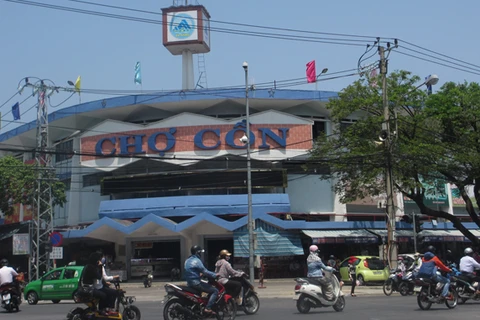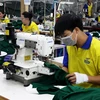 Local retailers want to expand their market share in the face of fierce competition from foreign investors (Photo: VNA)
Local retailers want to expand their market share in the face of fierce competition from foreign investors (Photo: VNA) Hanoi (VNS/VNA) - The race for domestic retail market share was heating up as local and foreign firms looked to expand their networks, experts said.
At a recent meeting in HCM City, Truong Cong Thang, general director of VinCommerce Company, told partners that the retailer wanted to open nearly 10,000 stores and more than 300 Vinmart supermarkets in the next five years.
In addition, the company also plans to attract 100 strategic partners with an ambition to lead the Vietnamese retail market. The company’s financial report showed that in the first nine months of the year, revenue reached 23.6 trillion VND, posting a 56.5 percent year-on-year increase.
Meanwhile, Saigon Co.op is looking at expanding its network to at least 2,000 stores and annual average revenue growth of 8-10 percent in the next five years.
It has already opened 849 stores in 43 provinces and cities that attract 350,000 customers a day, up 26 percent compared to five years ago.
Another leading retailer in HCM City, Satra, said that they targeted to have five Satramart supermarkets and four malls by 2025, and depending on the market situation, 150-250 Satra branded stores.
Local retail giants are looking to expand their market share in the face of fierce competition from big foreign investors such as Aeon, Lotte, Big C and Mega Market.
The latest example is in October 2020, Japan's largest retailer cosmetics chain Matsumoto Kiyoshi opened its first store in HCM City.
In July 2020, leading Japanese retailer Muji also opened a store in HCM City. Japanese fashion retailer Uniqlo, launched its first store last year.
Japanese retailer Aeon is also surveying a third shopping mall in HCM City in 2021, and plans to have 25 shopping malls in Vietnam by 2025 with a capital source of 2 billion USD for the investment.
Hirai Shinji, chief representative of JETRO HCM City (Japan External Trade Organisation) was quoted as saying by Thoi bao Kinh Doanh that after the COVID-19 pandemic and the market was gradually recovering, it was a favourable time for Japanese retail groups to open in Vietnam.
This would lead to fiercer competition, the experts said.
It was also important to note the efforts of domestic retailers to expand their systems into neighbouring areas of big cities, as urbanisation and incomes in these areas had been increasing.
Experts said that although retail sales were concentrated in major cities and key economic regions, with the high speed of urbanisation, these areas would become the driving force for growth instead of existing big cities.
As a result, many domestic retailers had been gradually expanding to areas surrounding the big cities. The evidence is quite clear from data showing that suburban stores brought in more revenue with higher growth than inner cities.
According to retail expert Nguyen Van Thinh, the number of supermarkets in 2020 had been decreased by 20 percent compared to 2019 - from 336 to 330. This decrease mainly came from Vinmart.
Meanwhile, the number of convenience stores has marked a growth of 60 percent - from 2,495 in 2019 to 5,228 stores in 2020. This came from Vinmart and Bach Hoa Xanh.
Small stores recorded a slight increase in 2020, while shopping centres posted a growth rate of about 11 percent from 96 centres in 2019 to 107 in 2020.
Thinh said that although there were many changes in 2020, Vietnam was still one of the most attractive retail markets in the world, and competition in the market was becoming more and more intense.
For some brands, it was an increase in the number of stores, others had to face restructuring, he said./.
VNA
























